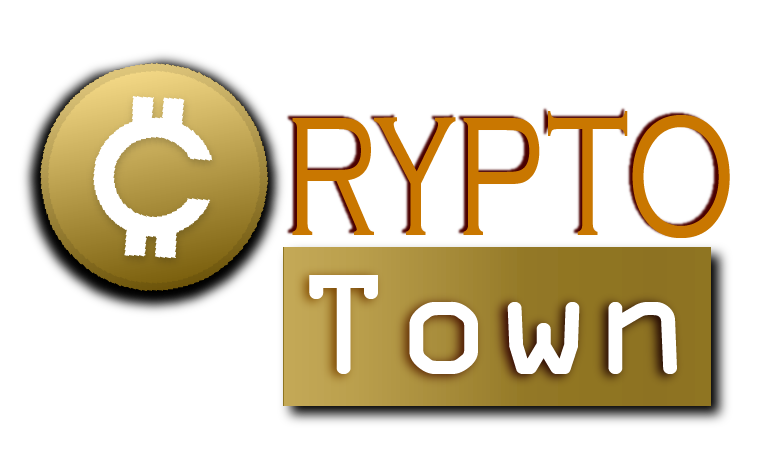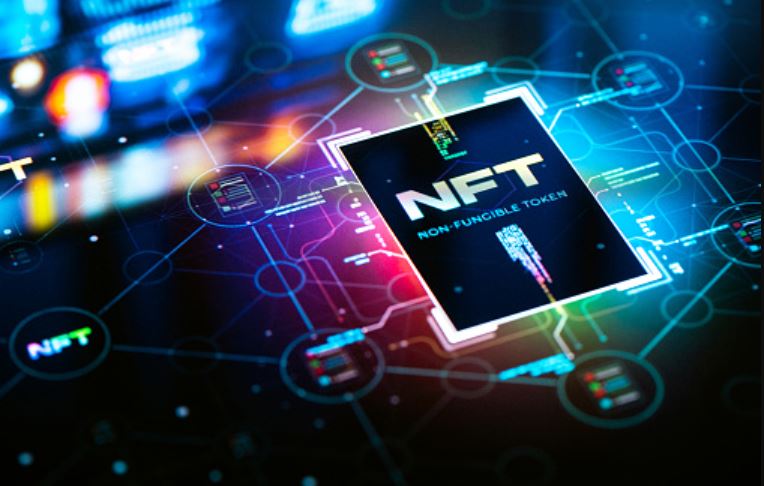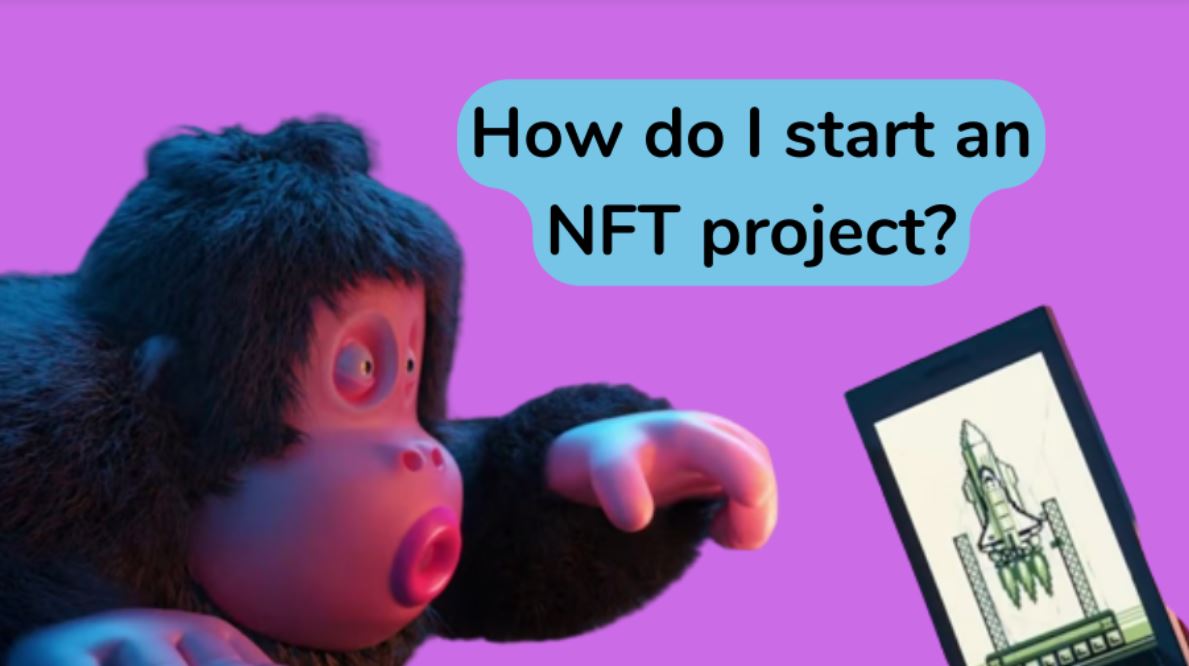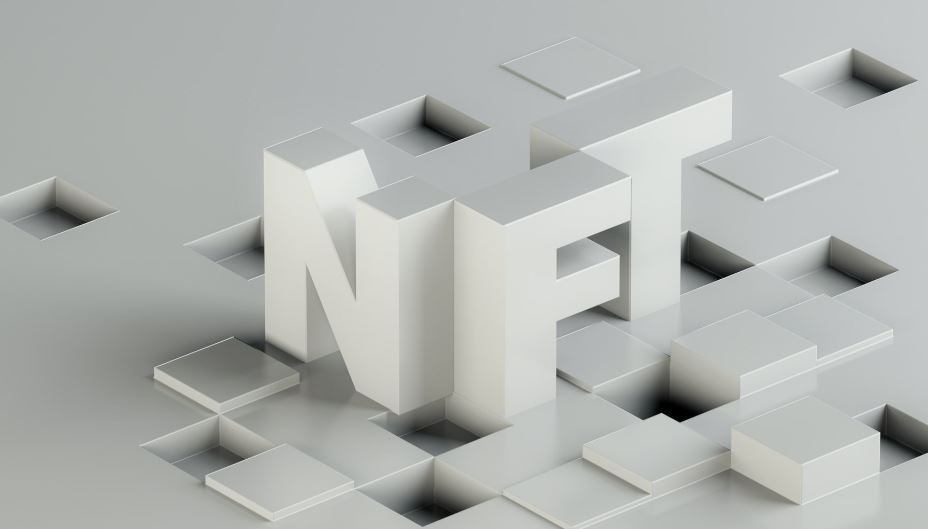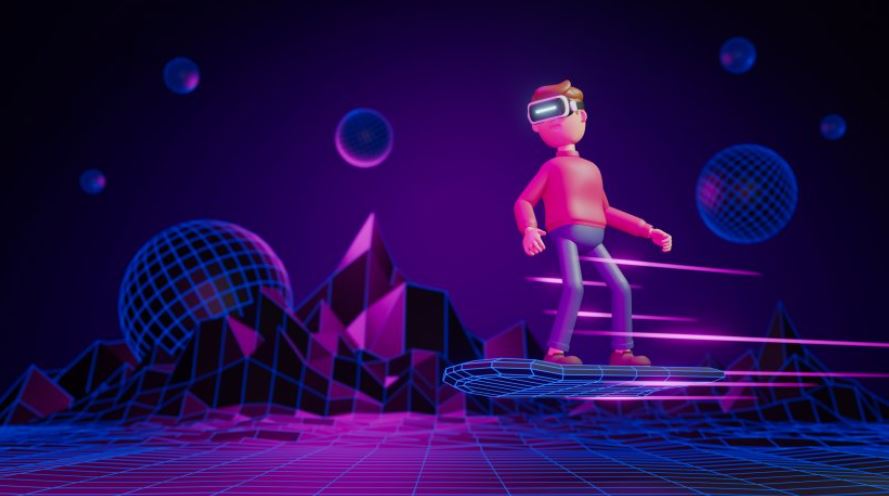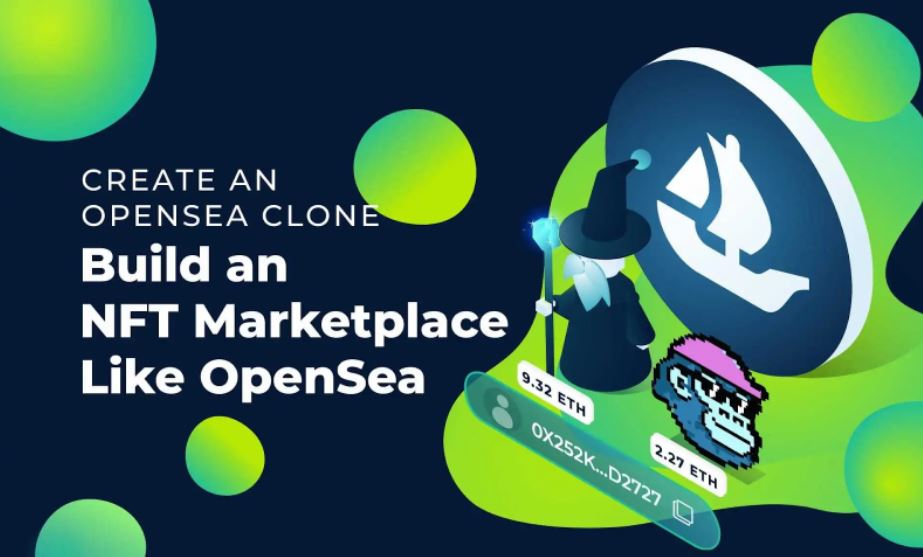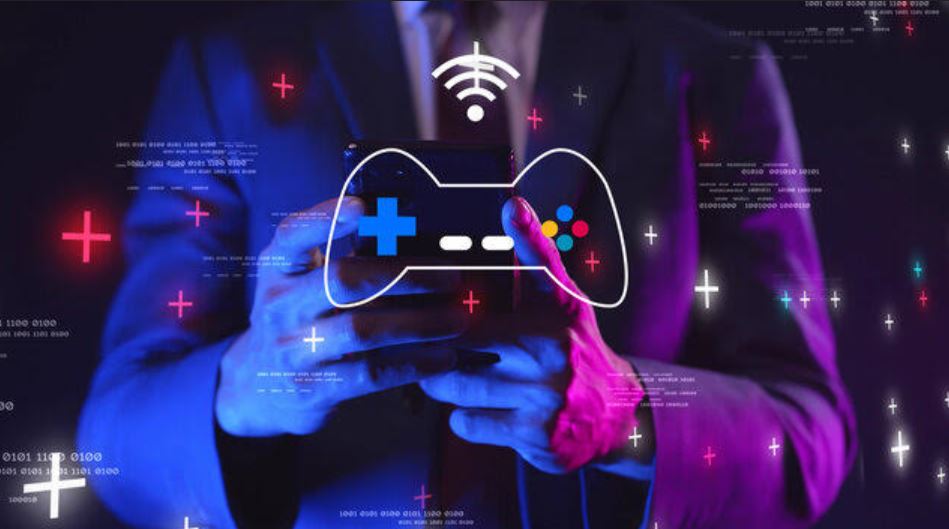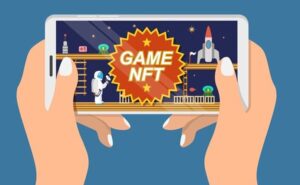On open blockchains, NFTs—individual tokenized representations of digital files—are traded. NFTs are growing in popularity thanks to collections of digitally first artefacts from fan favourite sportsmen and memorable game situations, with more than $1.5B in NFT transactions generated in the first quarter of 2021.
While the pricing of individual NFTs change, fascinating applications for NFTs continue to develop, and the foundation is being set for their long-term usefulness. With a deeper and more engaging way to engage fans and potential new revenue sources for organisations, this new form factor for commerce has enormous potential in the sports and entertainment sector.
What is an NFT?
Understanding cryptocurrency is necessary before understanding NFTs.
A blockchain is a term used to refer to a public database where cryptocurrency transactions are recorded. Distributed among computers using blockchain software is the database. The database is not owned or controlled by a single party, and anybody can gain access to it, validate ownership, and transfer cryptocurrency using the private keys linked to their cryptocurrency wallet.
NFTs are used to represent ownership of a certain asset and, like cryptocurrencies, are created on a blockchain. Each NFT is controlled by a “smart contract” and linked to a specific piece of data, usually a digital content file of some form. * A non-fungible token (NFT) is created by “minting” a media file, and just like a cryptocurrency, the NFT is then added to the relevant blockchain database.
In contrast to cryptocurrencies, NFTs are not fungible, which means that each NFT is distinct and cannot be used in place of another NFT. In other words, even though one bitcoin is equal to another, there is no similarity between any two NFTs. Additionally, just like with bitcoins, a blockchain database stores information about who owns which NFTs.
NFTs are relatively new, thus there isn’t much information available about how current rules and regulations affect them. NFTs are an intriguing medium for artists despite these concerns. The ability to definitively own online material in the form of an NFT for the first time, independent of a centralised intermediary, is opening up intriguing possibilities for digital engagement and trade.
Opening Up New Commercial and Engagement Possibilities
Today’s fans desire for a digital community
They are prepared to spend money in order to strengthen their relationships with their favourite sports teams and athletes.
Finding methods to use cutting-edge technology and provide an experience that matches fan behaviour is a problem for the sports industry.
The constraints of COVID-19 have made it even more necessary for athletes to use technology to interact with their fans. An estimated $18 billion in worldwide sports income has been lost as a result of the pandemic, which has increased the need to diversify revenue streams and concentrate on technology in order to reposition companies for growth prospects and to attract customers.
Read more: The Death of Royalties Will Transform NFT Business Models
NFTs are popular among talent, teams, leagues, fans, and collectors, among other groups
They have developed into an excellent tool for people and companies to take advantage of special assets, engage followers, and maybe earn income while staying ahead of the curve and maintaining pace with commercial innovation. Businesses should specify their ultimate goals for NFTs because the potential for growth with these technologies are still developing. NFTs are frequently used by brands to expand their businesses in the following ways:
- Fan Engagement: NFTs can be much more than just a collectible or work of art, and astute marketers are starting to realise this, the most popular and long-lasting NFTs will be those with enduring value and utility. By providing voting rights for team choices, access to special deals, and the opportunity to earn prizes, NFTs can, for instance, help supporters feel more connected to their preferred teams or companies.
- Customer relationship management: Unlike tangible commodities, NFTs are trackable, making it feasible to determine the wallet address where they are stored. NFTs have the ability to launch distinctive segmentation and engagement strategies depending on measurable aspects of the NFTs owned or purchased.
This could include the types, quantities, or holding periods of NFTs that are owned.
- New potential revenue streams: NFTs enable digital scarcity, allowing firms to sell exclusive, limited digital items, opening up new potential revenue streams. NFTs, as opposed to actual items, can have a smart contract that specifies the royalty rate chosen by the content producer. Once a result, as the NFT is sold or auctioned, further sales or auctions of it may result in money being made for the person who created it.
How to Integrate NFTs
To successfully integrate NFTs into a firm, there are seven measures to take into account. When thinking about NFTs, it’s crucial to have infrastructure partners who are adaptable and capable of supporting various use cases, markets, and blockchains through these seven steps. While many current systems are vertically integrated, more adaptable enterprise solutions are anticipated in the future.
1. Determine the NFT use case
The use of NFTs should be agreed upon first and foremost. There are various techniques to create an NFT, such as edition size and distribution, depending on the use case. The most well-known use cases so far have involved collectibles, artwork, games, and experiences.
- Collectibles: The NFTs’ ability to create a digital scarcity is a logical fit for collectibles or other assets whose value depends on a finite supply. One CryptoPunk NFT, like Covid Alien, sold for $11.75 million. CryptoKitties and CryptoPunks (10,000 distinct pixelated characters) are among the initial NFT use cases. Popular companies are already making NFT-based memorabilia, like NBA Top Shot moments, which are digital basketball cards with video highlights from NBA games instead of static graphics.
- Art: Rather than needing to print and sell works of art, NFTs allow artists to sell their creations in their original form. In addition, unlike with actual art, the artist can get money from later sales or auctions, guaranteeing that their original works are acknowledged in subsequent exchanges. Over $100M in digital art was purchased or auctioned off in March 2021 on NFT marketplaces specifically dedicated to art-based NFTs, such as Nifty Gateway (Crypto Art, n.d.).
- Gaming: Thanks to the ownership choices they bring, NFTs also present a considerable possibility for gaming. Although customers spend billions of dollars on digital game assets, such as purchasing Fortnite skins or costumes, they may not actually own these items. NFTs would make it possible for players of crypto-based games to own assets, accumulate assets while playing, export those assets from the game, and then sell those assets elsewhere, like on an open market.
2. Select the relevant blockchain
To choose the best blockchain, one must weigh tradeoffs in a variety of areas, including throughput, transaction costs, the application ecosystem already in place, and the degree of decentralisation. A business may begin creating NFTs on one blockchain, but in the future, there may be many other blockchains that allow NFTs, and the firm may want to produce NFTs on several different blockchains. The ideal infrastructure partner would enable asset interoperability between blockchains and support numerous blockchains.
Check out: Blockchain Technology – What Is It and Blockchain’s Practical Applications
The blockchain with the highest NFT activity is Ethereum, while other blockchains like Flow are also gaining popularity with NFTs.
- Ethereum: One of the biggest blockchains is Ethereum, which has a strong community of users, developers, wallets, and software. The majority of NFTs currently in use have been constructed on Ethereum using many of the most popular platforms and applications.
Although Ethereum hosts the majority of current NFTs, the “gas” fees associated with NFT transactions can be prohibitively expensive for smaller transactions. Due to this and the fact that Ethereum is so developer-friendly, several businesses have started to create “2nd layer networks” or adjacent blockchains on top of Ethereum in order to transmit Ethereum-based NFTs at considerably cheaper costs and with significantly higher transaction volume and speed.
- Flow: Another blockchain that is popular among NFTs is Flow. Although it is less popular than Ethereum, big mainstream firms like NBA Top Shot are creating platforms there. Through an energy-efficient blockchain transaction validation approach, Flow has been developed to boost throughput and lessen the difficulties associated with high gas costs. There is a more constrained ecosystem of developers and applications because it is still in its early phases. The main blockchain initiative at the moment is NBA Top Shot.
Attracting a diverse group of users and developers is one of the biggest sources of value for a blockchain. By executing the blockchain software on numerous computers, this supports and progressively decentralises the network while also adding value through the development of blockchain capabilities.
The developer community on Ethereum is tremendously strong, and third parties are adopting blockchains like Flow more frequently. Although it might be conceivable to develop exclusive blockchain software just for the purpose of storing NFTs, doing so would restrict the benefits that may be obtained.
3. Mint the NFTs
The NFT must be constructed, or “minted,” after choosing the content to utilise. A cryptographic key is used to produce a token on the blockchain that stands in for a piece of digital media in order to mint an NFT. The token can include crucial details like the name, description, and number of editions. An NFT is memorialised on the blockchain once it has been minted. Finding the right NFT Minting Website that provides flexibility and control over the NFT’s features is essential.
The minting of NFTs can be assisted by a number of platforms. It’s important to note that the ecosystem for this is still in its infancy. While the majority of platforms, like OpenSea and Rarible, are positioned for any creator, frequently including brand-new creators, there are platforms dedicated to supporting brands and larger creators. For example, Bitski has collaborated on drops with companies like Adidas and Levi’s, while Gary Vaynerchuk released his VeeFriends album on Nameless.
In order to have the most control over the NFT’s parameters, such as provenance, attributes, and storage of the underlying media asset, corporations are encouraged to locate suppliers who would mint NFTs in accordance with customised smart contracts.
4. Choose a long-term, sustainable method of storing digital assets.
NFTs are either created to hold a reference to the digital content or the actual digital content file. It is crucial to comprehend how the digital stuff that the NFT is distributing is being kept. Many of the sites already in use by creators to produce NFTs will host the media files using either the centralised or decentralised storage strategies outlined below:
- On the Blockchain directly
When this happens, the digital content and the token are both kept on the blockchain. The blockchain programme may only allot a certain amount of storage, so the maximum file size may be quite tiny. Many businesses consider the expense of directly storing digital content on the blockchain to be prohibitive, at least for the time being.
- Distributed Storage
There is no reliance on a single entity when storage files are shared throughout a distributed network. These peer-to-peer storage protocol developers, like Arweave, provide differing levels of storage permanence for various price ranges.
- Integrated Storage
Another choice is to use storage from a centralised provider, such as one of the numerous well-known cloud storage services available today. In this paradigm, the NFT marketplace offers the service of digital material archiving through connections with cloud service providers. The asset’s continued hosting is dependent upon the provider and the person who created the NFT; if the media is no longer hosted, the NFT will not point to anything.
5. Easily and safely store and access NFTs
NFTs are kept in a crypto wallet, which functions as the equivalent of a digital address in the world of cryptocurrencies. There are numerous crypto wallets available, ranging from wallets that provide users direct control over their assets to wallets from reputable exchanges that manage assets on their behalf.
It is crucial to be able to integrate with many of these wallets in order to deliver NFTs to the greatest possible number of digital addresses, which will increase the addressable market.
Wallets come in two main varieties: “non-custodial” and “custodial.” Customers that use cryptocurrency frequently favour the “non-custodial” model since it offers them total control over their money. Platforms like SuperRare and OpenSea are two examples.
The consumer is in charge of safely maintaining the private key that enables them to access and trade their NFTs when non-custodial wallets are included.
Each of these platforms is connected to particular third-party crypto wallets that offer consumers protection and encryption.
Contrarily, incorporating a custodial solution can aid in granting a larger audience simple access to a company’s platform. When adopting custodial solutions, it’s crucial that they come from a reputable company with robust security because they will be in charge of keeping NFTs safe on the customer’s behalf.
Read more: Launch Your 3D Metaverse NFT Gaming Platform With Sandbox Clone Script
6. Distribute throughout the relevant market
How NFTs are distributed is another crucial factor to take into account.
The following criteria should be taken into consideration when assessing NFT marketplaces: adaptability and control over branding of the user experience; whether users can buy NFTs using fiat money (dollars) or whether they must use cryptocurrency (accepting card payments is crucial for mainstream appeal); and the NFT marketplace’s target market.
The NFT economy is growing quickly, and Visa anticipates that the marketplace environment will follow suit. A few typical instances of NFT marketplaces that are currently part of the ecosystem are shown below.
- Open Marketplaces: These are large, public markets where anyone can produce and offer NFTs for sale. To purchase and sell NFTs on these platforms, cryptocurrency is required.
Since these platforms are “non-custodial,” users are responsible for holding and storing the assets.
- Crypto Native Curated Marketplaces: To produce NFTs and sell them on these platforms, contributors must be approved. They require cryptocurrency as payment, just like open markets, and let users keep custody of the assets themselves.
Existing Closed NFT Marketplaces: These sites brand themselves and utilise their own storefronts, yet they will custody NFTs for customers. These markets frequently include ramps for entering and exiting fiat money, accept card payments, and allow withdrawals via ACH or Wire.
- White-Labeled NFT Marketplaces: White Label NFT Marketplace has many varieties, ranging from those that will offer a white-label storefront to those that will offer a complete back-end infrastructure that enables the creation of a custody marketplace. Although the operation of fiat on-and-off ramps and the custodianship of the assets may be made default, storefronts facilitate smoother integration. Back-end infrastructure providers, on the other hand, will offer far more freedom but will demand greater technological advancement.
Last but not least, when intellectual property issues involving the digital content stored in the NFT are critical, businesses have worked together to establish their own marketplaces that enable them to have complete control over the NFT’s initial sale, secondary market, and special features that encourage the NFTs to stay on this platform.
This type of platform has to work with specialised technology vendors who can help set it up and run it, which can be highly costly.
7. Identify extra chances to involve fans
The main applications of NFTs today are in the sale of art and collectibles. Although these use cases have the potential to bring in money, they also present undiscovered strategic prospects.
For instance, the composability of NFTs is a fascinating feature. NFTs can be created in a fashion that spans several use cases as the ecosystem matures. Deeper fan involvement is made possible by this long-term usefulness, which eventually results in more value NFTs that bring in more money from secondary sales or auctions.
The Last Wise Words
Innovations in commerce, such as cryptocurrency and NFTs, are likely to influence sports, entertainment, and other communities in the future. NFTs provide fans a more advanced and creative method to interact, as well as potential new money streams for organisations.
NFTs are a novel technology, thus there are numerous factors to take into account when integrating them.
Check out: Top 3 NFT Releases in September 2022
